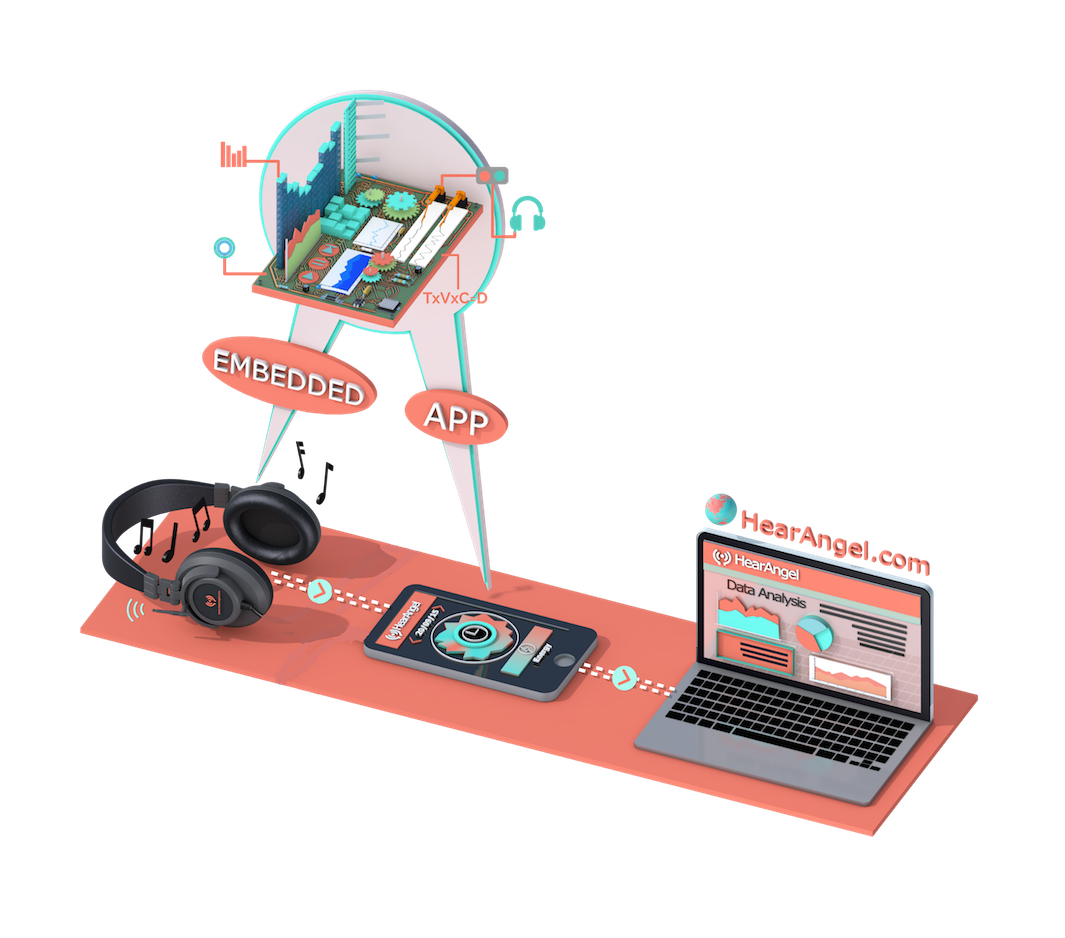HearAngel Hearing Safeguarding
HearAngel provide a standards-compliant software solution that enables wireless headphone and platform providers to offer hearing safeguarding in their products.
The solution comprises highly efficient embedded software that executes on the chipset in the headphone together with an (optional) companion smartphone application to provide an intuitive user interface for the reporting of sound dosage and the control of the hearing safeguarding. The flexible software supports all of the key DSP and host processor architectures in the market, and can be adapted to suit all platforms.

Technical Details
- Supports execution on DSP only or DSP + host processor platforms
- Minimal resource requirements (<4MIPS, <100Kbytes)
- Audio sampling via internal microphone or from audio output driver
- No modification of audio output stream (other than volume control)
- Bluetooth interface to control and reporting smartphone interface
- Companion application (or SDK) for iOS and Android smartphones
Manufacturer Benefits
- Time to market: manufacturers have access to a standards-compliant implementation ready for product integration without the need for ground-up development. HearAngel software is already compliant with the upcoming changes in WHO-ITU standards.
- Know-how and domain expertise: the HearAngel solution embodies more than ten years experience of delivering hearing safeguarding solutions into demanding professional and occupational environments. HearAngel are active participants in the development of hearing safeguarding standards with the WHO and ITU.
- Intellectual property protection: HearAngel have a number of patents filed around hearing safeguarding technologies that alternative implementations may have to work around.
- Cost effectiveness: lower cost than the internal (or external) costs of a software development from scratch and ongoing maintenance and upgrades.
Safety Standards Compliance
HearAngel® embedded software allows wireless headphones to provide hearing safeguarding features that meet ITU/WHO H.870v1 and v2, ITU/WHO H.871 safety standards and the enhanced levels of the IEC62368-1 regulations.
